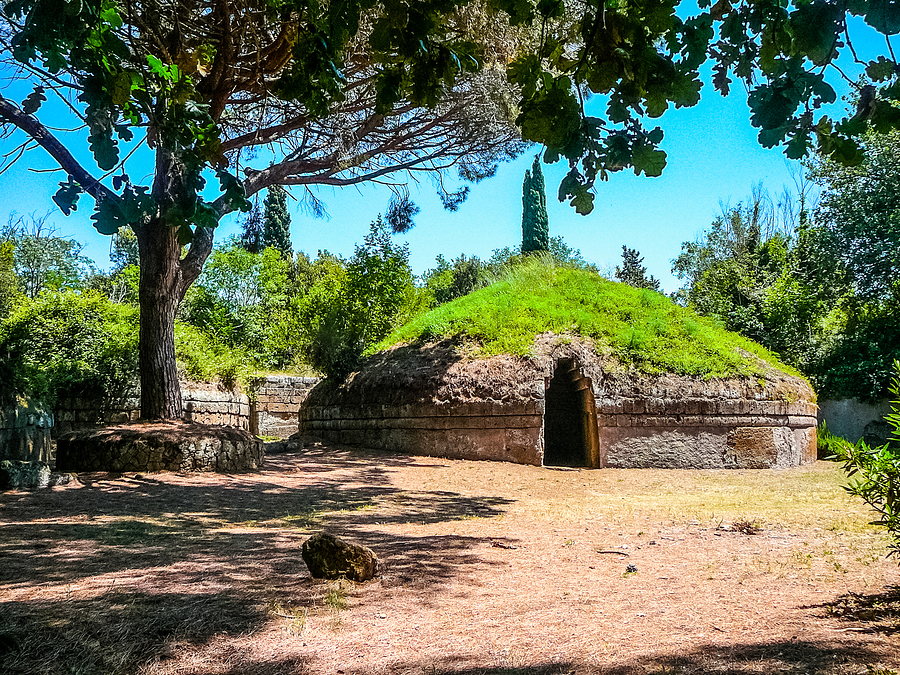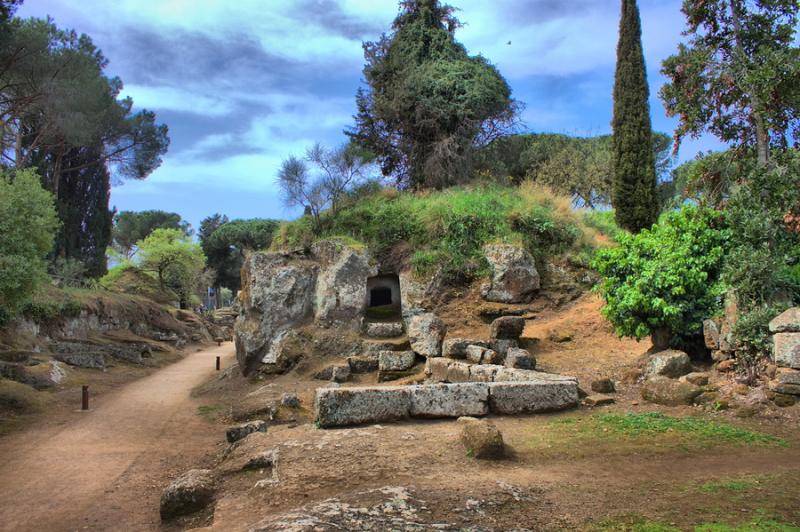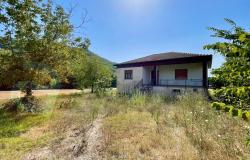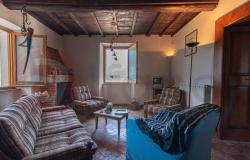Beyond Rome, the landscape of Lazio unfurls in a panorama of fertile fields dotted with cypresses and umbrella pines. Venturing north toward Tuscany, we move into the heart of ancient Etruscan lands. One of the most evocative testimonies of this ancient culture lies at Cerveteri, a quiet town an hour’s drive north of Rome. It’s an easy day trip from the city, or a destination in itself for those fascinated with Italy before the Roman era.
The Banditaccia necropolis, on the outskirts of Cerveteri, is a stunning Etruscan “city of the dead” that, along with the necropolis at Tarquinia, is listed as a UNESCO World Heritage site. This off-the-beaten-track archeological park immerses you in the world of the ancient Etruscans. The tombs at Cerveteri are organized along paved roads with gutters, drains, sidewalks cut out of rock, all representative of Etruscan urban planning. To walk the streets of Banditaccia, you get a feel for what it might have felt like to explore an Etruscan town.

The necropolis at Banditaccia developed over the course of some five hundred years, between the eighth and third centuries BCE. As time passed, in addition to the large, circular, grass-covered round tombs known as tumuli, there were also squarish tombs constructed of hewn blocks and organized into regular units. Many of these tombs were not just reserved for the elite but were like middle-class neighborhoods. The tomb chambers were either partially or entirely excavated below the ground, some even hewn out of solid bedrock.
Cities of the Dead
By the sixth century BCE, some of the richest burials in the Mediterranean world were located in central Italy.
By this era, the Etruscans had a well-established funerary culture. Similar to the Egyptians, the Etruscans seem to have conceived tombs as homes for their dead.
More than that, the necropolis—or city of the dead—was a kind of parallel universe to the city of the living. In fact, many of these cities of the dead, as at Cerveteri, were extensive. Many were laid out on a grid plan much like Etruscan towns, with paved roads and regular city blocks.
Inside each tomb, the bodies of multiple generations of one family might be collected. This practice set the Etruscans apart from the ancient Greeks and Romans, who buried only the immediate family together. This means that over time, the tomb might become not only a repository for human remains but also a treasure trove of precious goods made over a long span of time, from terra-cotta cinerary urns and sarcophagi to fine works of gold, silver, bronze—even imported luxuries such as Greek pottery and engraved ostrich eggs.

The family would then see these objects again and again as they entered the tomb over the generations. I imagine them convening after a funerary ritual, entering the tomb together to handle beloved family heirloo
It seems that for the Etruscans, death was also the cause for all kinds of rituals, elaborate processions, funerary games, contests, dances, and animal sacrifices, not to mention ritual banquets and drinking parties. Many of these dramas are enacted in wall paintings and sculpted on funerary containers located inside tombs across Etruria.
Taking a Deep Dive into Etruscan Tombs at Cerveteri
One of the most elaborate tumuli from the Banditaccia necropolis is the so-called Tomb of the Shields and Chairs, dating from the sixth century BCE. This is a multi-chambered tomb with a vestibule and three burial chambers.

Along the interior walls of the entrance, sculptors carved out of the tufa bedrock six beds and two high-backed chairs with footstools. Art historians believe that originally, life-size terra cotta sculptures of the deceased probably occupied those chairs. Behind the chairs and around the walls are round shields that were probably originally painted. The tomb itself seems to imitate the interior of an Etruscan home. The door frames resemble wooden door jambs. And in the ceiling, the tomb sculptors have sculpted beams out of the tufa that resemble wooden roof beams. To enter the tomb feels a bit like entering a house.
Inside, there are beds carved from the rock where the bodies would be laid. Males seem to have been laid on beds with a semicircular stone “pillow,” while females had pillows of a more triangular shape. Apart from this, it doesn’t seem that males and females experienced any different treatment in death. In affording the women equal status in the afterlife, the Etruscans again were exceptional compared to their neighbors in the Mediterranean.
Inside the Tomb of the Capitals, also at Banditaccia, the faux timber framing around the doors and the wooden-looking roof beams is repeated, but this time, the tomb sculptors have also carved faceted columns with capitals decorated with volutes. Again, we get a little more information about the world of the living by examining the world of the dead.

What to See in Cerveteri
Banditaccia Necropolis
Via della Necropoli, 43/45
00052 Cerveteri (Lazio)
06/9940651
Go early, and immerse yourself in a peaceful walk among the alleys of this city of the dead, accompanied by the hum of cicadas. You can walk inside many of the tombs, some of which are accessible with metal staircases with railings. A combined museum ticket will also allow access to the necropolis at Tarquinia, further north from Cerveteri.
Cerveteri Museum
Museo Nazionale Cerite
Piazza Santa Maria
00052 Cerveteri
345/9193132
After visiting the Banditaccia necropolis outside of town, don’t forget the local museum, which occupies a medieval castle of the princes of Ruspoli and displays a plethora of Etruscan grave goods from the region. My favorite: a pair of shoe soles made of iron!
Where to See the Treasures Discovered in the Tombs of Cerveteri
Over the last two hundred years, some jaw-dropping discoveries have been made in Etruscan tombs. In the rare case when an Etruscan tomb of a high-ranking person has been found undisturbed, the finds are fantastic—often a tomb filled not only with funerary containers and sarcophagi, but also pottery, gold, metalwork, and jewelry. At Cerveteri, a few tombs have yielded Etruscan objects that are nothing short of spectacular. Here’s where to see them:

ROME
National Etruscan Museum
Villa Giulia
Piazzale di Villa Giulia, 9
00196 Rome
06/3226571
Along with the Etruscan collection of the Vatican (below), the Villa Giulia holds some of the most important masterpieces of Etruscan art, including the famous terracotta Sarcophagus of the Spouses found at Cerveteri. This amazing sarcofago degli sposi was discovered during the course of archaeological excavations in 1881 at the Banditaccia necropolis. The Etruscan Museum at the Villa Giulia in Rome purchased the sarcophagus, which at that time consisted of some 400 fragments which had to be pieced back together. This work stands as a symbol for the festive, fun-loving spirit of the Etruscan culture of the sixth century BCE, and is one of the masterpieces of Etruscan art. Don’t miss it!

Etruscan Collection of the Vatican Museums
Vatican Museums
Viale Vaticano
00120 Vatican City
06/69884676
Many people miss this museum as they are being pushed along in the sea of visitors headed toward the Sistine Chapel. Take a detour into the Museo Gregoriano, and immerse yourself in the world of the Etruscans. Several galleries are dedicated to masterpieces of Etruscan art, including the spectacular finds from the Regolini-Galassi Tomb discovered at the so-called Sorbo necropolis, also near Cerveteri.
When the Regolini-Galassi Tomb was discovered in 1836, they found a female skeleton covered in gold jewelry. Across her chest, she wore a gold pectoral decorated with hundreds of tiny animals and plants, a symbol of her high status. She wore a belt with a spectacular gold fibula made with repoussé and granulation techniques. She wore two wide gold bracelets decorated with trios of dancing females with long hair and long dresses. She also wore necklaces with beads and amber pendants, gold earrings, rings, and pins. At her feet, the name LARTHIA was inscribed on each piece an 11-piece silver set at her feet. We don’t know whether Larthia was an aristocrat, a queen, or a priestess, but clearly, she was a woman of high status. The display of Larthia’s grave goods in the Vatican Museum offers us an incredible view into the life—and afterlife—of the ancient Etruscans, and sparks our imagination of what might still be left at Cerveteri, and elsewhere, to discover.

Laura Morelli is an art historian and historical novelist with a passion for Italy. You can find much more about what to bring home from Italy in her guidebook, Made in Italy. You can also pick up copies of her Venice-inspired historical novels, The Painter’s Apprentice and The Gondola Maker, in the Italy Magazine shop.












